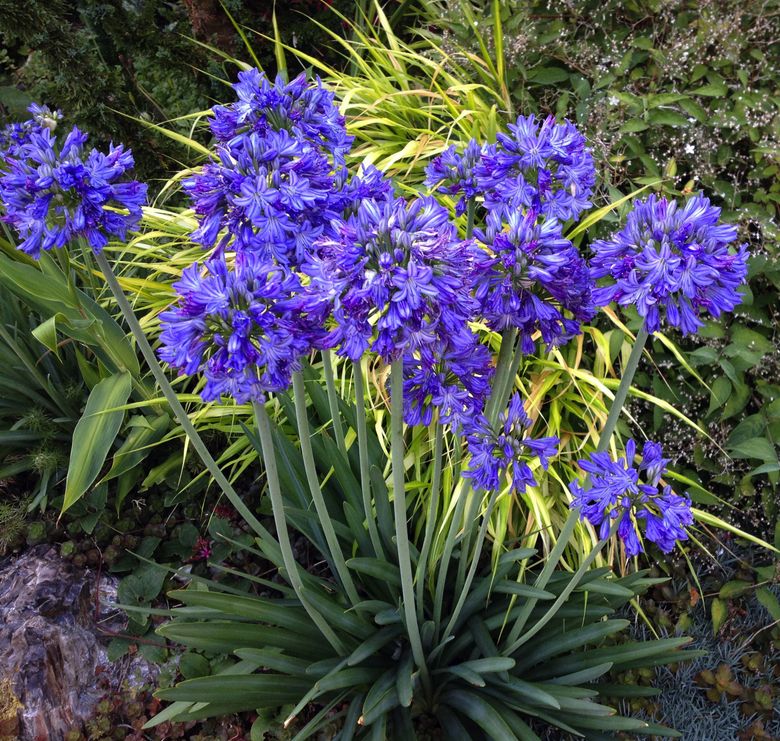Seasonal Agapanthus Treatment: Getting Ready For Winter and Summer season
Seasonal Agapanthus Treatment: Getting Ready For Winter and Summer season
Blog Article
Understanding the Art of Agapanthus Treatment: Vital Steps for Healthy Growth and Lively Blossoms
In the world of cultivation, the growing of agapanthus stands as a gratifying venture for those that look for to nurture these stylish flowering plants. With their striking blossoms and graceful foliage, agapanthus has recorded the focus of gardeners worldwide. However, accomplishing optimum development and vivid blooms needs a nuanced approach that incorporates different necessary steps. From choosing the appropriate variety to mastering pruning strategies, the journey towards growing prospering agapanthus plants is multifaceted and holds the vital to opening the complete possibility of these botanical treasures.

Choosing the Right Agapanthus Selection

When choosing the appropriate Agapanthus variety for your yard, think about variables such as environment suitability, blossom shade, and growth habit. Agapanthus, typically called Lily of the Nile or African lily, comes in a selection of shades varying from tones of purple and blue to white. Choose a flower color that matches your existing yard scheme to produce an unified landscape. Additionally, consider the climate in your area to make sure the Agapanthus range you select can flourish in your particular conditions. Some selections are a lot more forgiving of cool temperature levels, while others like warmer climates. Recognizing the development behavior of different Agapanthus selections is essential for proper positioning within your garden. Some ranges have a clumping development practice, perfect for borders or containers, while others have an even more dispersing nature, suitable for ground cover or mass plantings. By carefully examining these factors, you can choose the perfect Agapanthus range to improve the appeal of your yard.
Perfect Growing Problems
Thinking about the optimal environmental requirements is vital for successful Agapanthus growing. Agapanthus prospers in well-draining dirt with a somewhat acidic to neutral pH degree. When growing, pick a place that obtains full sunshine to partial color. In hotter climates, giving some mid-day color can avoid scorching of the fallen leaves. Agapanthus plants are delicate to cool temperature levels and must be safeguarded from frost throughout wintertime months.
To ensure healthy and balanced development and vivid flowers, plant Agapanthus light bulbs at a deepness of about 2-4 inches and room them 8-12 inches apart. Adding raw material, such as compost, to the soil can boost drain and fertility, promoting robust origin growth. Mulching around the base of the plants aids keep moisture and suppresses weed development. Regular watering is critical, specifically during the expanding period, to keep the dirt constantly wet yet not waterlogged.
Watering and Feeding Tips
Preserving proper moisture levels and providing necessary nutrients are key elements in the treatment routine for Agapanthus plants. When it comes to watering Agapanthus, it is critical to strike a balance. These plants favor consistently moist soil but are at risk to root rot if overwatered.
Fertilizing Agapanthus is vital for advertising healthy development and respected flowers. Use a well balanced plant food, such as a 10-10-10 formula, in the early spring as brand-new development emerges. Repeat this application every 6-8 weeks throughout the expanding season. Avoid extreme fertilization, as it can result in this link lavish vegetation at the cost of flowers. Always adhere to the supplier's guidelines for appropriate dilution and application approaches. By complying with these watering and feeding suggestions, you can guarantee your Agapanthus plants prosper and produce vibrant, lasting blossoms.
Trimming Strategies for Agapanthus
Trimming Agapanthus plants at the suitable times and with proper methods is essential for maintaining their health and wellness and promoting ideal growth and flowering. The perfect time to trim Agapanthus is in late winter season or early spring before new growth arises.
Deadheading spent flowers can also redirect the plant's power right into producing more blossoms rather than establishing seeds. If you want to collect seeds for propagation, leave some blossoms to dry and mature on the plant.
Bear in mind to utilize clean, sharp devices to make precise cuts and lower the danger of you can try these out presenting conditions. Agapanthus. Normal pruning will assist keep your Agapanthus looking cool and healthy and balanced while ensuring an abundant display screen of beautiful blooms
Managing Typical Insects and Conditions
After guaranteeing correct trimming techniques for Agapanthus, it is essential to deal with usual parasites and diseases that can affect the wellness and vitality of these plants. One typical parasite that influences Agapanthus is the Agapanthus gall midge.
Additionally, Agapanthus plants can experience from origin rot if they are grown in inadequately draining pipes dirt. By being cautious and taking timely action against diseases and parasites, you can aid your Agapanthus plants grow and produce lively blossoms. Agapanthus.

Verdict
To conclude, understanding the art of agapanthus care involves choosing the appropriate variety, offering optimal planting conditions, appropriate watering and feeding, appropriate trimming strategies, and addressing usual parasites and diseases. By adhering to these important actions, you can guarantee healthy and balanced development and vibrant blossoms for your agapanthus plants. Bear in mind to routinely monitor and preserve your plants to advertise their overall wellness and durability.
To make certain healthy growth and dynamic flowers, plant Agapanthus light bulbs at a deepness of about 2-4 inches and space them 8-12 inches apart. By adhering to these watering and feeding suggestions, you can guarantee your Agapanthus plants thrive and create vibrant, durable flowers.
One usual pest that affects Agapanthus is the Agapanthus gall midget. Furthermore, Agapanthus plants can experience from origin rot if they are planted in improperly draining soil. By complying with these necessary actions, you can guarantee healthy my explanation and balanced development and dynamic blooms for your agapanthus plants.
Report this page